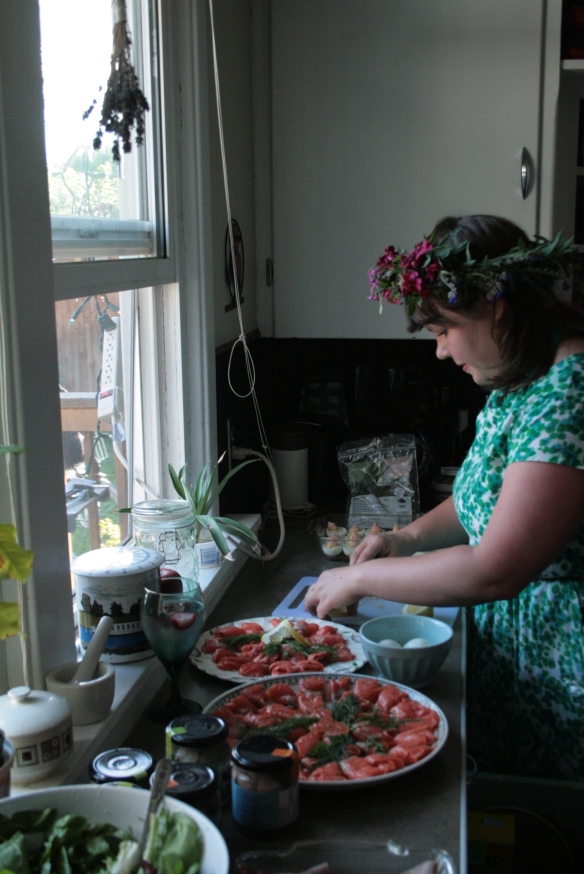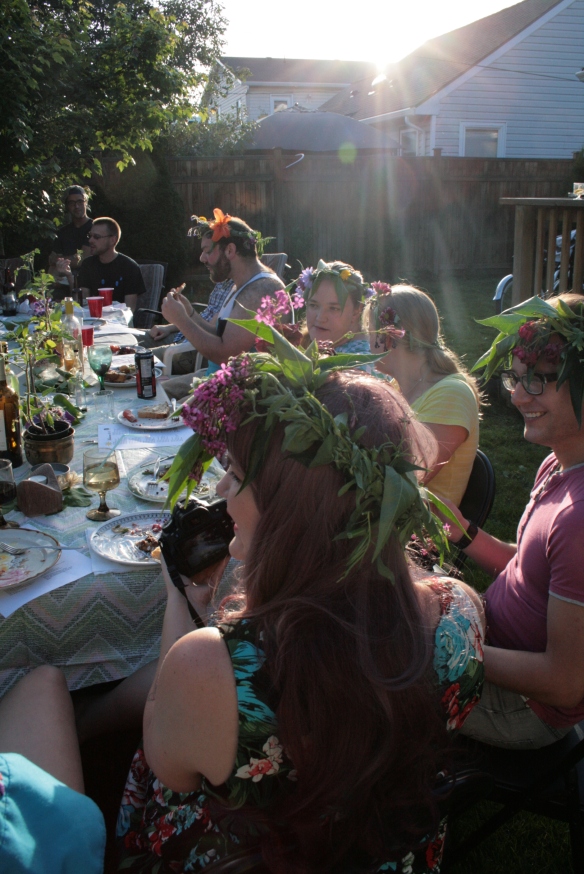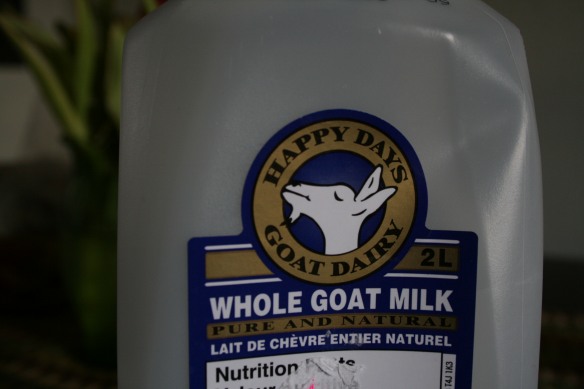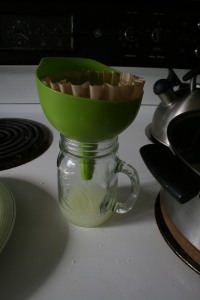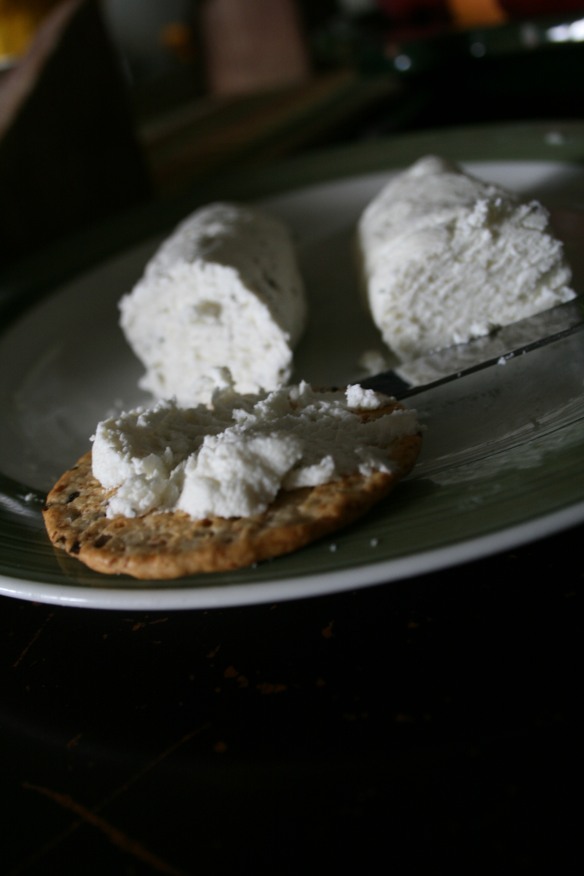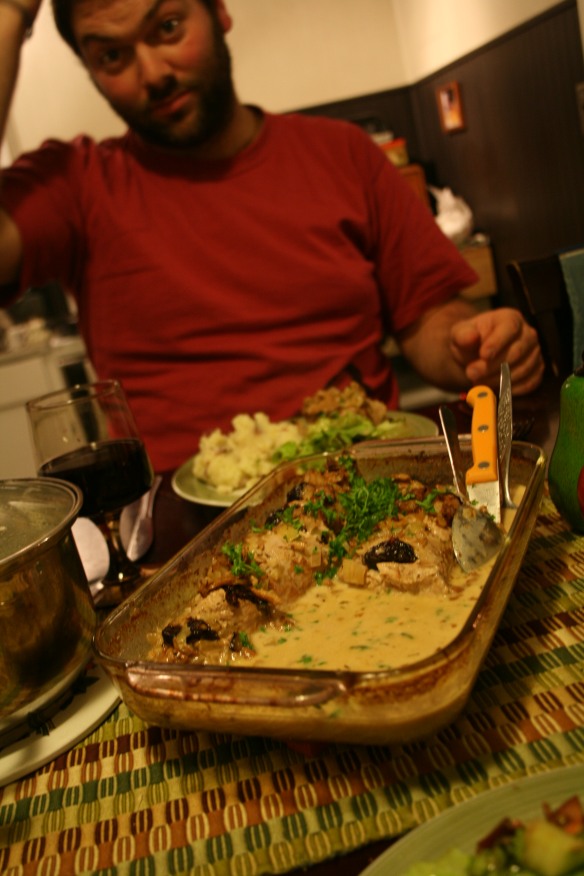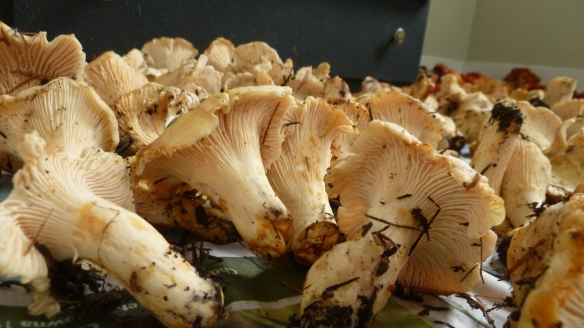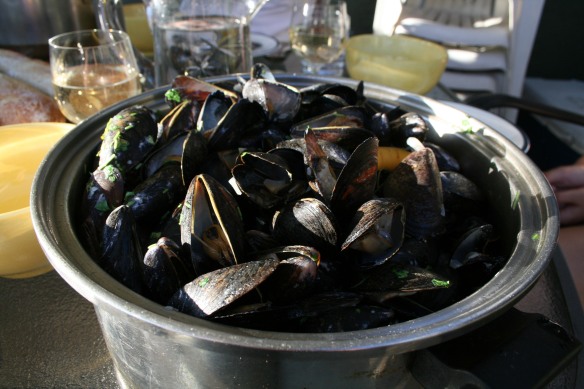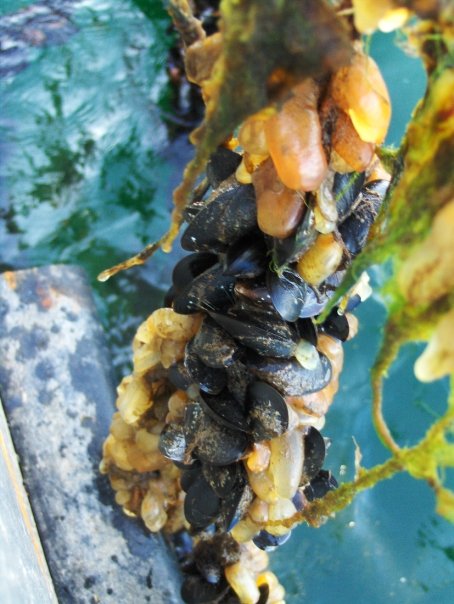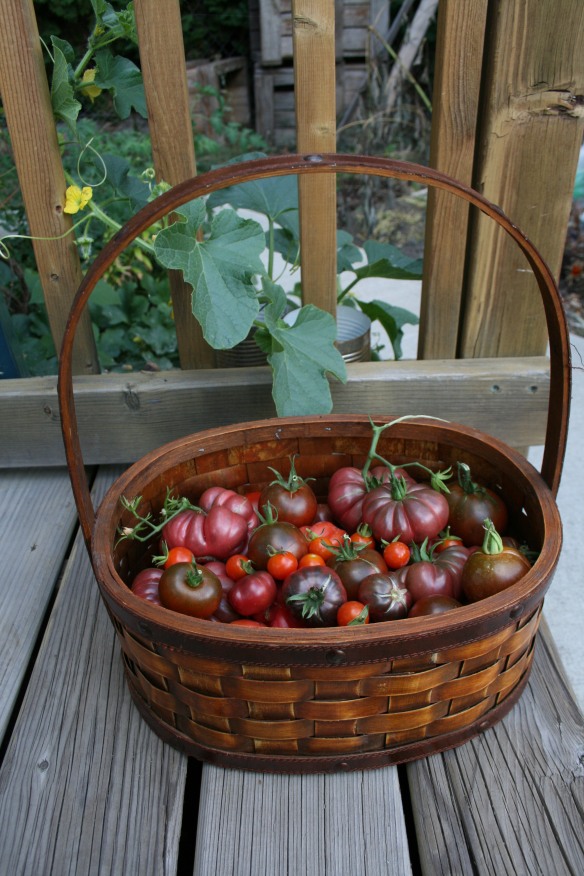Something that we Swedes eat for pretty much every holiday is cured salmon, or as we call it – gravlax (salmon from the grave). It got it name from the fact that fishermen used to ferment it by burying fish in the sand by the high-tide line for a while (probably flavoured by some brackish Baltic sea water) but I promise you, it works just as well to make it in a plastic bag in your fridge.
The taste is similar to smoked salmon but with a slightly different consistency (it kind of melts in your mouth!). It’s quite expensive to buy pre-made and believe it or not – dead easy to make at home! All you need is:
1 filet of pre-frozen salmon (buy it previously frozen or have it in the freezer and then de-frost before you make it)
1 large ziploc plastic bag
Per 1kg salmon:
- 3 tbs salt
- 3 tbs sugar
- 1½ tsp white pepper corns
- 150 ml chopped fresh dill
Mix the salt, sugar and ground pepper corns in a bowl.
spread the mix out evenly on two pieces of salmon filet (I kind of rubbed it in a little too).
Add the chopped dill on top and press the two filet pieces together.
Put the whole package in a sealed plastic bag and let sit in the fridge for 3 days. make sure to flip the package half way through so that everything gets evenly cured.
The picture below is from the original recipe where they did it between two plates instead of in a bag:
Once the 3 days have passed, take your filets out and scrape off the dill & pepper (you could wash it lightly if you want to make it a little less salty). Finish by cutting thin slices along the fish like in the picture.
Serve rolled up like little roses to get the perfect midsummer smörgåsbord:





